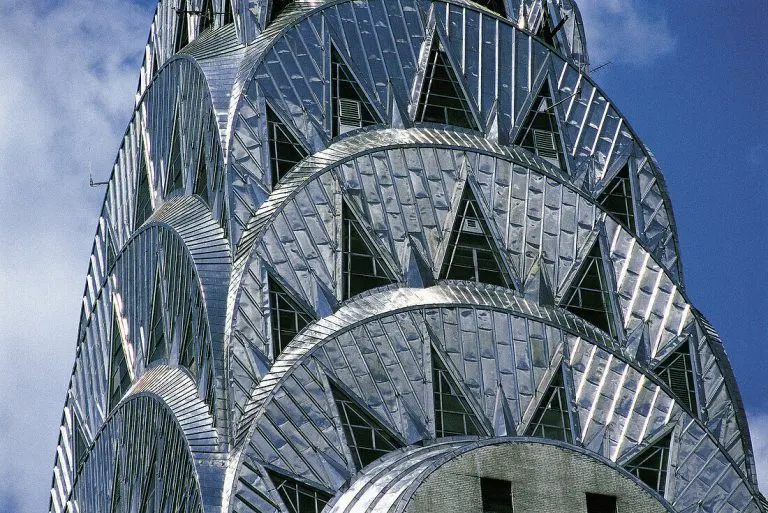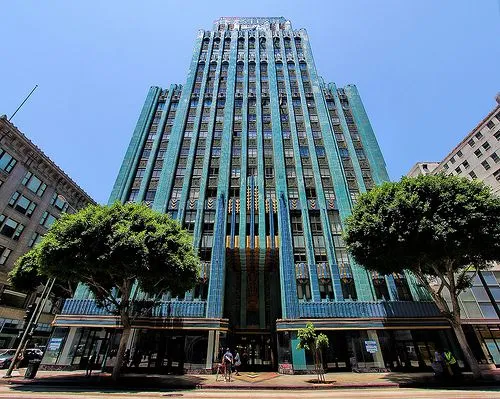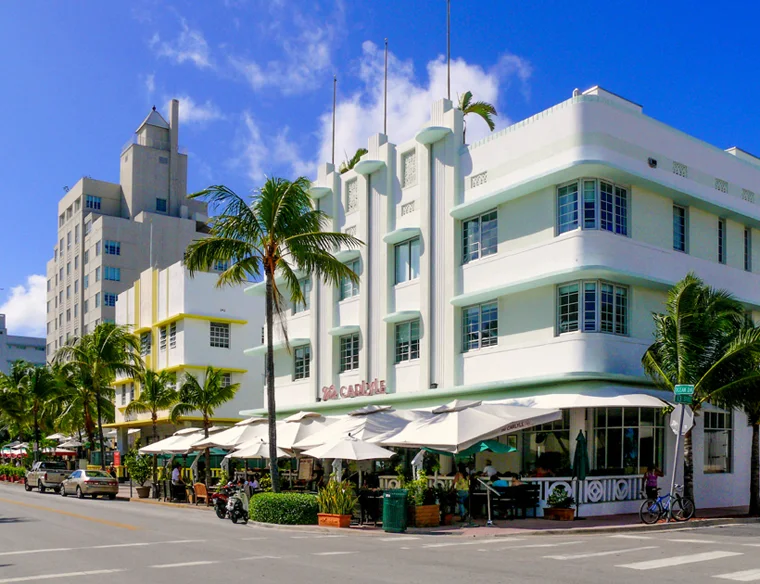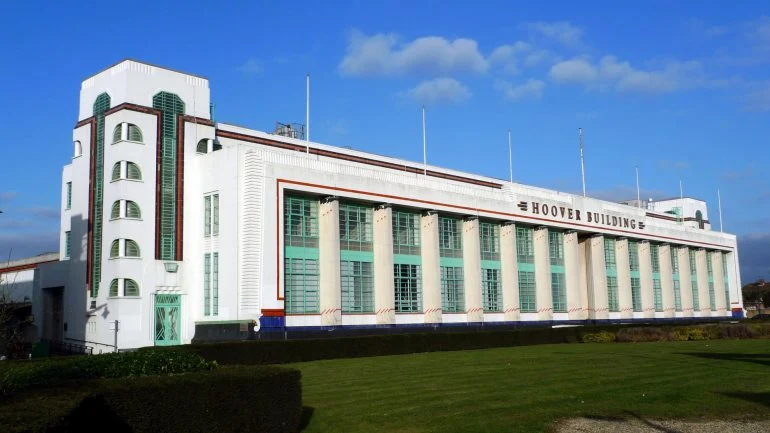Art Deco Architecture: A Fusion of Elegance and Modernity
Art Deco Architecture Defined
"Hello to all my readers",
As a part of our ongoing specialized series, which we have been presenting on our blog recently, we did delve into the exploration of various architectural styles. In this edition, we will discover the widely recognized Art Deco Architecture style: its emergence, and distinctive features and characteristics... Also, we will showcase a few notable project examples built with this style. So, keep on reading!
If you’re a fan of light, clean, and streamlined designs, then Art Deco Architecture might just be your next new favorite architectural style; it is all about celebrating and incorporating new technologies and materials while still honoring previous architectural traditions. It combines classicism and modernism with geometric patterns, sleek lines, and innovative materials and colors.
Art Deco is one of the prominent architectural styles that emerged in the early 20th century in France and quickly spread throughout the world. It continues to captivate enthusiasts with its striking blend of elegance, modernity, and geometric forms.
 |
| Detail of the stainless steel roof of the Chrysler Building in NYC, designed with Art Deco architectural style, Photo: dailyartmagazine.com |
In this blog, we’ll explore the main characteristics of Art Deco Architecture and how it became one of the most timeless looks in building design. So sit tight and get ready to appreciate one of the most iconic architectural styles!
Emergence of the Art Deco Style
Art Deco found its roots in the aftermath of World War I, as a response to the extravagant and ornamental Art Nouveau movement. But where did it come from? As noted above, originating in Europe and later spreading across the globe, Art Deco became immensely popular during the 1920s and 1930s, influencing various fields such as architecture, fashion, interior design, and visual arts.
It's a style that has become synonymous with luxury, glamour, and elegance. Although it was inspired by a variety of sources, including the Cubist and Futurist movements, as well as Ancient Egyptian and Art Nouveau design, the
Art Deco was all about celebrating technology, industry, and modernity. It was characterized by bold geometric patterns, sleek lines, and a focus on symmetry and balance. It was a style that was meant to be both visually stunning and functional, and it was used in everything from buildings and furniture to cars and jewelry.
But the style wasn't just limited to buildings - it also influenced everything from fashion to furniture to automobiles. It was all about embracing modernity and creating a sense of glamour and sophistication.
So why did Art Deco become so popular? Well, it was in part a reaction to the austerity of World War I; People wanted to inject some excitement and luxury back into their lives. Plus, it was a perfect fit for the Jazz Age, with its emphasis on excess and decadence.
Even today, the Art Deco style is still popular - just think of all those Gatsby-themed parties! It's a timeless look that will always be associated with luxury and style.
Currently, Art Deco continues to be a popular style, with many people still appreciating its timeless elegance and modern sophistication. Whether you're a fan of its sleek lines and geometric patterns or simply love the way it embodies the spirit of the 20th century, there's no denying that Art Deco is here to stay!
Main Characteristics of Art Deco Architecture
It includes the following features:
- Geometric Forms: This style embraces bold geometric shapes, such as zigzags, chevrons, sunbursts, and streamlined curves. These elements create a sense of dynamism and energy in architectural designs.
- Luxurious Materials: It often incorporates lavish and exotic materials, including marble, chrome, glass, and precious metals. These materials enhance the opulence and grandeur of the buildings.
- Symmetry and Balance: Art Deco places a strong emphasis on symmetry and balance, with buildings often featuring mirrored facades, stepped forms, and geometric patterns that create a sense of harmony and order.
- Verticality and Streamlining: Art Deco buildings often feature vertical lines, setbacks, and tiered structures, emphasizing a sense of verticality and modernity. Streamlined forms and aerodynamic shapes reflect the influence of industrial design and the emerging machine age.
 |
| The Eastern Building in Los Angeles, an example of Art Deco Architecture, Photo: Pinterest |
Often referred to as the "Jewel of Downtown," the Eastern Columbia Building was built during a time when the city of Los Angeles enforced a height limit of 150 feet. But the government made an exception for the glamorous clock tower at the top of the building. (See Fig. above)
- Decorative Details: Intricate decorative elements, such as stylized flora, fauna, and sunbursts, adorn Art Deco buildings. These embellishments add a touch of sophistication and glamour to the overall design.
Notable Project-Examples with Art Deco Architecture
- Chrysler Building, New York City, USA: One of the most iconic Art Deco landmarks, the Chrysler Building showcases a stainless steel spire, sunburst patterns, and intricate ornamentation. It is its grandeur and exquisite design that will make it a true masterpiece.
 |
| The Chrysler Building in Manhattan, New York, Photo by Jake Heinemann |
- Palais de Tokyo, Paris, France: Originally built as a museum for modern art, Palais de Tokyo is a stunning example of Art Deco architecture. Its symmetrical façade, large windows, and geometric motifs capture the essence of the style.
- Ocean Drive, Miami, USA: The Art Deco Historic District in Miami's South Beach area boasts a vibrant collection of pastel-colored buildings with streamlined facades, porthole windows, and neon signage. This vibrant district serves as a living testament to the popularity and lasting influence of Art Deco.
 |
| Art Deco Historic District in Miami's South Beach area, Photo: http://casasemmiami.com.br/ |
- The Hoover Building, London, UK: Designed as a factory for the Hoover Company, this London landmark showcases Art Deco elements such as decorative brickwork, geometric patterns, and a prominent clock tower. It represents the integration of industrial functionality and aesthetic appeal.
 |
| The Hoover Building, London, UK, Photo: guidelondon.org.uk |
- Napier, New Zealand: After a devastating earthquake in 1931, the town of Napier was rebuilt in the Art Deco style. The entire town showcases an array of Art Deco buildings, characterized by zigzag motifs, sunbursts, and pastel colors. Napier has become a pilgrimage site for Art Deco enthusiasts worldwide.
NYC's 1920s Art Deco Revival Video
Welcome to a mesmerizing journey through those 5 newly architectural wonders that have brought the vibrant spirit of the 1920s roaring back to life in the heart of New York City. In this captivating video from the well-known B1M channel on YouTube, you are invited to explore five extraordinary projects that embody the essence of the Great 1920s Revival.
Immerse yourself in the grandeur and elegance of these architectural masterpieces that pay homage to the bygone era while seamlessly blending modern innovation. Each soaring skyscraper project encapsulates the glamour, energy, and timeless allure of the 1920s. Get ready to be transported to a long-ago era, where New York City's architectural renaissance awaits your discovery.
Hope you will enjoy the video and that it will add a little to your knowledge!
In conclusion, Art Deco architecture continues to capture the imagination with its harmonious blend of elegance, modernity, and decorative opulence. Its influence can be seen in numerous architectural marvels around the world, each reflecting the spirit of the Roaring Twenties and the progressive ideals of the early 20th century. By embracing geometric forms, luxurious materials, and striking decorative details, Art Deco architecture remains an enduring testament to the creative fusion of art and design.
.png)






